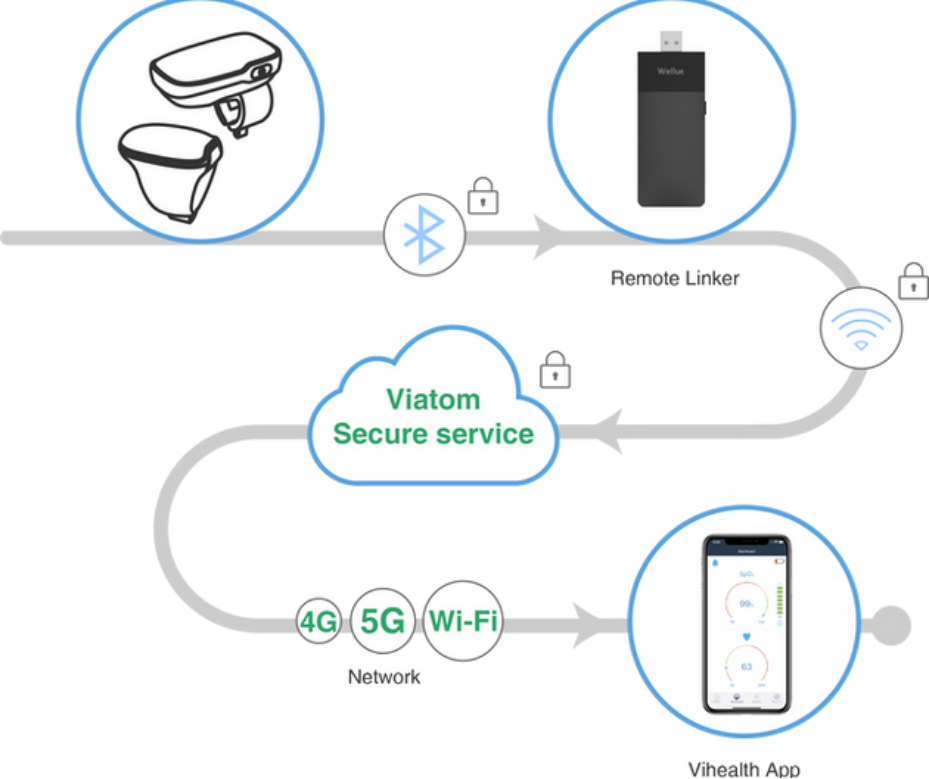
Do you want to improve decision-making with wearables in healthcare systems? Wearable devices are emerging as an immersive tool for proactive care and biomedical research. Data integration with these wearable tools further helps to generate meaningful insights for researchers and patients in the healthcare domain.
In this article, explore with us how to assemble data from multiple clinical systems to achieve enhanced monitoring capabilities and data-driven decisions.
Converting Medical Devices into Wearables
When dealing with data, healthcare systems require a greater level of flexibility. Traditional medical equipment is converted into more user-friendly instruments to improve convenience and data unification. It broadens the scope of their applications and delivers a more personalized experience.
1. Broadening the Scope: Making Any Device Wearable
The transformation of medical devices into wearable technology allows for real-time monitoring in everyday life. Traditionally, medical equipment was confined to clinical settings and required professional assistance. By incorporating these tools, the standard device components are miniaturized and designed into more portable gadgets that can be worn on the body. Over 44% of Americans approve of wearable fitness trackers for health monitoring purposes.
Moreover, these innovative devices are integrated with advanced sensors that broaden their scope of applications. For instance, diagnostic gadgets like electrocardiograms (ECGs), pulse oximeters, blood pressure monitors, or blood glucose monitors can be made wearable. It enables continuous data tracking of health conditions in a non-intrusive manner.
2. Unlocking New Possibilities: Beyond Traditional Health Monitoring
Beyond monitoring basic vital signs, these tools are deployed to perform a variety of functions.
Screening
One of them is screening. It identifies factors associated with the individuals and promotes preventive healthcare. For example, by enabling some passive sensors, you can measure movement patterns, steps, sleep quality, light, sound, pressure, and other environmental conditions. About 60% of Americans track their weight, diet, or exercise routine by using wearables. These valuable insights unlock immersive data and support personalized intervention.
Detection
Additionally, this innovative technology also incorporates multiple sensors for the detection of many biomedical conditions. For instance, they contain accelerometers, GPS, or gyroscopes to track physical activity, stress levels, or exposure to pollutants or allergens.
Suggestions & Prediction
Also, based on the data collected through surveillance, these gadgets can offer fitness recommendations to personalize your life routine. You can also predict some future trends by using accelerometer insights like mortality or biological age. So, by adopting wearables, users can proactively manage their overall health effectively.
3. Lowering the Barriers: Accessibility and Affordability
Previously, the medical machinery used for diagnosis was very heavy, costly, and needed specialized training to operate. It’s easy to deploy these supplies more conveniently by making them wearable.
It alleviates the barrier of accessibility, and individuals can use them outside of the confines of clinics or health facilities. Mostly, these tools are helpful in remote monitoring and tracking the health status of patients. You can access quality health maintenance in your homes without frequent hospital visits.
Moreover, this latest technology has the potential to lower costs. It mitigates the production and design costs of heavy equipment. Now, you can leverage innovative techniques, wireless connectivity, and extensive data at an economical price. Thus, these gadgets are more affordable and accessible to a wider audience.
Challenges in Wearable Data Integration
1. Ensuring Data Consistency and Accuracy
This variability is because different wearables use different sensors and varied data processing algorithms. Also, different measurement practices lead to inconsistencies in data generation. For example, if you want to measure blood oxygen saturation, the results will greatly vary depending on device type and location.
So, it’s crucial to address this issue to maintain data consistency and transparency in portable gadgets. Try to use standardized protocols and validation processes to ensure accuracy in the assembled data. Also, data interoperability makes it easy to exchange data across devices or software platforms and leads to more uniform results.
2. Overcoming Data Integration Challenges in the Wearable Data Chain
These gadgets generate insights from various sensors, so it might be challenging to analyze the data cohesively. Moreover, these handheld devices produce large data volumes over time. The storing, analyzing, or processing of such massive data is complex. Also, there are some privacy concerns in collecting sensitive health information.
To overcome these challenges, the specialists:
- Adopt data filtering to alleviate redundant or irrelevant data. When this technique is applied at the device level, it optimizes the storage or data processing requirements.
- Utilize standard data formats like CSV or JSON to ensure compatibility across various devices’ data.
- Adopt built-in data validity mechanisms to filter out inconsistent data and enhance overall quality.
- Adopt security measures like encryption, strict access control, and transmission protocols. It ensures that only authorized persons have access to personal health info.
3. Forming a Closed Data Loop for Continuous Insights and Support
Wearable devices can produce a stream of continuous data. To get a meaningful understanding of these insights, forming a closed loop is significant. This process connects data assembling, analysis, interpretation, and feedback. However, different data management systems of various gadgets can make this task challenging. For this purpose, the specialists should adopt robust measures to integrate data in a loop.
Moreover, the continuous data requires real-time processing. This poses obstacles in terms of information storage, computational abilities, and more. So, a system of efficient processing may help acquire continuous support.
Viatom’s Solution: A Comprehensive Wearable Health Ecosystem
Viatom aims to offer innovative wearable devices and software solutions to maintain health efficiently. You can conveniently analyze your health parameters by leveraging our data analysis tool and health ecosystem. Viatom confidently offers data services, including
- Data Collection
- Data Transformation
- Integration of the monitoring sensor device SDK




Deja una respuesta